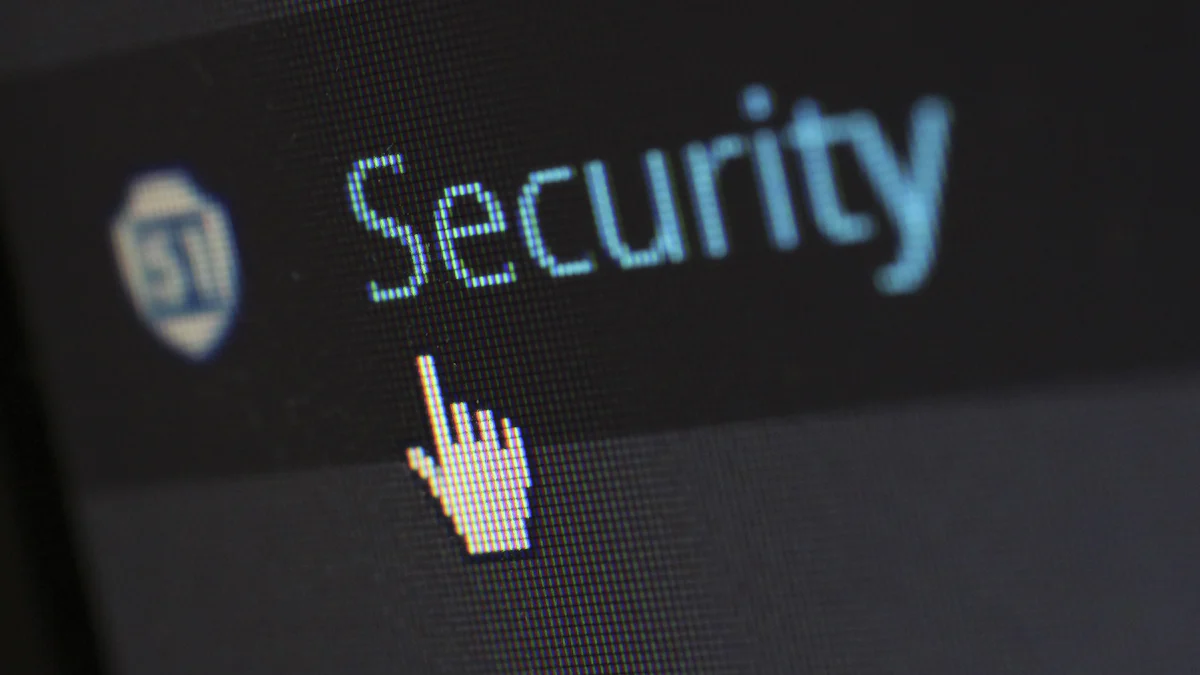Understanding Whitelisting in Cybersecurity

In the realm of cybersecurity, the concept of a whitelist and its regular usage meaning serve as a robust strategy to safeguard your digital assets. By creating a list of approved entities, you ensure that only trusted applications, users, or devices gain access to your network. This denial-by-default approach enhances security by blocking unauthorized access. Whitelisting not only provides granular control over network access but also tailors security measures to meet specific needs. As a best practice in cybersecurity, it effectively manages threats like zero-day attacks, offering significant benefits for organizations concerned with security.
What is Whitelisting in Cybersecurity?
Definition and Explanation
In the world of cybersecurity, whitelisting stands as a proactive defense mechanism. You create a whitelist to specify which applications, users, or devices can access your network. This approach, known as a denial-by-default strategy, blocks all entities not on the list. By doing so, you significantly reduce the risk of unauthorized access and potential cyber threats. Whitelisting requires careful planning and understanding, but it plays a crucial role in enhancing your organization's security posture.
Whitelist and Regular Usage Meaning
The term "whitelist" in cybersecurity refers to a list that grants permission to trusted entities. In regular usage, a whitelist functions similarly by allowing only approved items or individuals. For instance, you might use a whitelist to control which email addresses can send messages to your inbox, thereby preventing spam. In cybersecurity, the whitelist and regular usage meaning align closely, both focusing on permitting only known and trusted entities. This method provides robust protection against malware and unauthorized access, making it a cornerstone of effective cybersecurity defenses.
By implementing a whitelist, you bolster your defenses against cyber threats. You ensure that only pre-approved applications and users interact with your systems. This strategy not only enhances security but also mitigates insider threats and improves malware defense. Understanding the whitelist and regular usage meaning helps you appreciate its value in maintaining a secure digital environment.
How Does Whitelisting Work?

Whitelisting serves as a powerful tool in enhancing network security by allowing only trusted entities to interact with your systems. You might wonder, how does whitelisting work? It operates through various mechanisms that ensure only pre-approved applications, users, or devices gain access to your network. This section will delve into the different types of whitelisting and the implementation process.
Mechanisms of Whitelisting
Application Whitelisting
Application whitelisting plays a crucial role in protecting your systems from malicious software. By creating a whitelist of authorized applications, you ensure that only vetted and approved software can run on your network. This approach prevents harmful files and malicious code from executing, thereby safeguarding your organization's infrastructure. For instance, you might whitelist essential software like Microsoft Office or antivirus programs while blocking others. This method not only enhances security but also reduces the risk of malware infection.
Network Whitelisting
Network whitelisting focuses on controlling which devices and users can access your network. By implementing specific whitelists, you restrict access to only those entities that have been pre-approved. This strategy adds an extra layer of security, preventing unauthorized users from infiltrating your network. Network security becomes more robust as you limit access to trusted devices and users, thereby reducing the risk of cyber threats.
Email Whitelisting
Email whitelisting helps you manage which email addresses can send messages to your inbox. By allowing only trusted senders, you minimize the risk of phishing attacks and spam. This mechanism ensures that your email communication remains secure and free from malicious content. Email whitelisting serves as an effective tool in maintaining the integrity of your organization's communication channels.
Implementation Process
The implementation of whitelisting solutions requires careful planning and execution. You begin by identifying the applications, users, or devices that need access to your network. Next, you create a whitelist that includes these authorized entities. Regular updates and reviews of this list are essential to ensure its effectiveness. You must also educate users about the importance of adhering to the whitelist and the potential risks of unauthorized access. By integrating whitelisting with other network security measures, you enhance your organization's overall cybersecurity posture.
Implementing application whitelisting involves delegating a system administrator or using third-party applications to manage the list of approved software. This process ensures that only trusted applications run on your network, thereby preventing security breaches. The implementation of network whitelisting requires setting up access controls that limit entry to pre-approved devices and users. Email whitelisting involves configuring your email system to accept messages only from trusted senders.
By understanding how whitelisting works and implementing it effectively, you can significantly enhance your organization's network security. This proactive approach not only protects sensitive data but also keeps harmful files at bay, ensuring a secure digital environment.
Benefits of Whitelisting
Whitelisting offers numerous advantages in strengthening your cybersecurity defenses. By allowing only trusted entities to access your systems, you create a robust barrier against potential threats. Let's explore the key benefits of whitelisting.
Enhanced Security
Whitelisting significantly enhances your security posture. By implementing an allowlist, you exercise fine-grain control over who or what can access your network. This approach minimizes vulnerabilities and reduces the attack surface. You effectively prevent unauthorized access and mitigate the risk of data breaches. With whitelisting, you defend against malware and shadow IT, ensuring that only known and trusted entities interact with your systems. This proactive strategy greatly reduces the risk of cyber intrusion.
Reduced Risk of Malware
One of the primary benefits of whitelisting is its effectiveness in malware defense. By restricting access to pre-approved applications, you minimize the chances of malicious software infiltrating your network. Application whitelisting plays a crucial role in preventing malware infections. It ensures that only vetted and authorized software can run on your systems. This method not only blocks malicious code but also reduces false positives, simplifying your security measures. By focusing on trusted applications, you bolster your defenses against cyber threats.
Improved System Performance
Whitelisting contributes to improved system performance by streamlining processes and reducing unnecessary load. By allowing only essential and trusted applications to operate, you optimize resource usage. This approach prevents malicious software from consuming valuable system resources, leading to enhanced efficiency. Application whitelisting ensures that your systems run smoothly, free from the burden of unauthorized or harmful programs. As a result, you experience faster and more reliable performance, contributing to a secure and efficient digital environment.
By understanding and implementing the benefits of whitelisting, you strengthen your cybersecurity defenses and protect your organization from potential threats. This strategy not only enhances security but also improves system performance, making it an essential component of effective cybersecurity practices.
Limitations of Whitelisting
While whitelisting offers significant benefits in cybersecurity, it also presents several limitations that you should consider. Understanding these challenges will help you implement a more effective strategy.
Maintenance Challenges
Maintaining a whitelist requires ongoing effort and attention. You need to regularly update the list to include new applications, users, or devices that require access. This process involves examining every aspect of your network ecosystem to ensure accuracy. Without regular updates, your whitelist may become outdated, leading to potential security breaches. You must also manage exceptions carefully to prevent unauthorized access while maintaining operational efficiency. This continuous maintenance can be time-consuming and demands dedicated resources.
Potential for Over-Restriction
Whitelisting can sometimes lead to over-restriction, which may impede business processes. By denying applications by default, you might inadvertently block legitimate software or users. This can frustrate employees and disrupt workflows. To mitigate this, you should automate the exception management process. This approach allows you to quickly address legitimate access requests without compromising security. However, balancing security with usability remains a challenge. You must ensure that your access controls are flexible enough to accommodate necessary changes without exposing your network to unauthorized access.
Resource Intensity
Implementing and managing a whitelist can be resource-intensive. You need skilled personnel to oversee the process and ensure its effectiveness. This includes setting up access controls, monitoring for unauthorized access, and addressing any issues that arise. The complexity of managing a whitelist can lead to user frustration, especially if false negatives occur. You must allocate sufficient resources to handle these challenges and maintain a secure environment. Despite these demands, the proactive nature of whitelisting makes it a valuable tool in preventing security breaches.
By understanding these limitations, you can better prepare for the challenges of implementing whitelisting. This knowledge will help you create a more robust cybersecurity strategy that balances security with operational needs.
Whitelisting vs. Blacklisting

In the realm of cybersecurity, understanding the differences between whitelisting and blacklisting is crucial. Both strategies aim to protect your systems, but they operate in distinct ways.
Key Differences
Whitelisting and blacklisting serve as two sides of the same coin in cybersecurity. Whitelisting involves creating a list of approved entities, such as applications or users, that can access your network. Anything not on this list gets automatically denied. This approach is proactive, focusing on trust and allowing only known entities. On the other hand, blacklisting identifies and blocks known threats. It maintains a list of malicious entities that should not access your systems. While whitelisting restricts access by default, blacklisting permits access unless an entity is deemed harmful.
Situational Use Cases
Choosing between whitelisting and blacklisting depends on your specific needs. Whitelisting proves beneficial in environments where security is paramount, such as financial institutions or government agencies. By allowing only pre-approved applications, you minimize the risk of unauthorized access. Blacklisting, however, suits scenarios where flexibility is necessary. It allows broader access while blocking known threats, making it ideal for less sensitive environments. For instance, antivirus software often uses blacklisting to prevent malware infections. Understanding these use cases helps you decide which strategy aligns with your security goals.
Advantages and Disadvantages
Both whitelisting and blacklisting offer unique advantages and disadvantages. Whitelisting provides enhanced security by limiting access to trusted entities. It reduces the attack surface and prevents unauthorized software from running. However, it requires continuous maintenance and can lead to over-restriction. You must regularly update the whitelist to accommodate new applications and users. Blacklisting, in contrast, offers greater flexibility and ease of use. It allows access to most applications while blocking known threats. Yet, it may not catch new or unknown threats, leaving your systems vulnerable. Balancing these pros and cons helps you implement an effective cybersecurity strategy.
Best Practices for Implementing Whitelisting
Implementing whitelisting effectively requires a strategic approach. By following best practices, you can enhance your cybersecurity defenses and ensure that only authorized users access your network.
Regular Updates and Reviews
Regular updates and reviews are crucial for maintaining an effective whitelist. As new software versions and updates emerge, you must evaluate their compatibility with your existing whitelist. This ensures that your whitelist remains current and effective against emerging threats. Blue Goat Cyber, a cybersecurity expert, emphasizes the importance of continuous monitoring and updating. They state:
"As new software versions or updates are released, organizations need to evaluate their compatibility with the existing whitelist and make necessary adjustments."
By performing whitelist reviews regularly, you can identify outdated entries and remove them, reducing vulnerabilities. This proactive approach helps you stay ahead of cybercriminals and maintain a robust cybersecurity posture.
User Education and Training
Educating users about whitelisting best practices is essential. Users should understand the importance of adhering to the whitelist and the risks associated with unauthorized access. Training sessions can help users recognize potential threats and the significance of user access control. By fostering a culture of security awareness, you empower users to contribute to the organization's cybersecurity efforts. This education ensures that everyone understands their role in maintaining a secure environment.
Integration with Other Security Measures
Whitelisting should not stand alone; it must integrate with other security measures to provide comprehensive protection. Combining whitelisting with access control mechanisms strengthens your defenses. This integration allows you to manage user access control effectively, ensuring that only authorized users interact with your systems. By aligning whitelisting with other security strategies, you create a multi-layered defense that reduces vulnerabilities and enhances overall security.
Incorporating these best practices into your whitelist management strategy will help you build a resilient cybersecurity framework. By staying vigilant and proactive, you can protect your organization from potential threats and ensure a secure digital environment.
Common Challenges in Whitelisting
Whitelisting serves as a vital component in your cybersecurity strategy, but it comes with its own set of challenges. Understanding these challenges helps you implement a more effective whitelist that balances security and usability.
Balancing Security and Usability
When you implement whitelisting, you must strike a balance between security and usability. A whitelist enhances security by allowing only trusted entities to access your systems. However, overly restrictive whitelists can hinder productivity. You might block legitimate applications or users, causing frustration and workflow disruptions. To maintain this balance, you should regularly review and update your whitelist. This ensures that it remains effective without impeding business operations. Cybersecurity professionals emphasize the importance of aligning whitelists with your overall business strategy. By doing so, you create a secure environment that supports your organizational goals.
Managing False Positives
False positives present another challenge in whitelisting. These occur when the whitelist mistakenly blocks legitimate applications or users. False positives can disrupt your operations and lead to user dissatisfaction. To manage this, you should implement a robust exception management process. This allows you to quickly address legitimate access requests without compromising security. Regularly updating your whitelist and educating users about its importance also helps reduce false positives. By fostering a culture of security awareness, you empower users to contribute to maintaining a secure environment.
Keeping Up with Changes
The dynamic nature of technology requires you to keep your whitelist up to date. New software versions, updates, and emerging threats necessitate regular reviews and adjustments. Without these updates, your whitelist may become outdated, leaving your systems vulnerable. You should allocate resources to monitor changes and ensure your whitelist remains current. This proactive approach helps you stay ahead of cyber threats and maintain a robust cybersecurity posture. By understanding the importance of continuous monitoring, you enhance your defenses and protect your organization from potential risks.
Whitelisting stands as a vital component in your cybersecurity strategy. By allowing only trusted entities, you enhance security and reduce risks. To implement whitelisting, start by identifying critical applications and users. Regularly update your whitelist to keep it effective. Educate your team on its importance. For further understanding, explore resources on cybersecurity best practices. This proactive approach not only safeguards your data but also ensures smooth operations.
FAQ
What is Whitelisting in Cybersecurity?
Whitelisting in cybersecurity involves creating a list of approved entities, such as applications, users, or devices, that can access your network. This approach enhances security by blocking all entities not on the list, ensuring only trusted interactions occur.
How Does Whitelisting Differ from Blacklisting?
Whitelisting allows only pre-approved entities to access your systems, while blacklisting blocks known threats. Whitelisting provides a proactive defense by restricting access by default, whereas blacklisting permits access unless an entity is identified as harmful.
Why Should You Use Whitelisting?
Whitelisting offers enhanced security by reducing the risk of unauthorized access and malware infections. By allowing only trusted applications and users, you create a robust barrier against potential cyber threats.
What Are the Challenges of Implementing Whitelisting?
Implementing whitelisting can be resource-intensive and requires regular updates. You must balance security with usability to avoid over-restriction and manage false positives effectively.
How Can You Maintain an Effective Whitelist?
Regular updates and reviews are crucial for maintaining an effective whitelist. Evaluate new software versions and updates for compatibility, and remove outdated entries to reduce vulnerabilities.
What Is the Difference Between Products and Services?
Products are tangible items that you can physically hold, while services are intangible and involve providing or performing something for another person.
How Does Application Whitelisting Work?
Application whitelisting restricts the usage of software to only those that have been vetted and approved. This method prevents harmful files and malicious code from executing on your network.
Can Whitelisting Improve System Performance?
Yes, whitelisting can improve system performance by allowing only essential and trusted applications to operate. This approach optimizes resource usage and prevents malicious software from consuming valuable system resources.
What Are the Best Practices for Whitelisting?
Best practices include regular updates, user education, and integration with other security measures. These steps ensure your whitelist remains effective and aligns with your overall cybersecurity strategy.
How Do You Balance Security and Usability in Whitelisting?
To balance security and usability, regularly review and update your whitelist. Implement a robust exception management process to address legitimate access requests without compromising security.
See Also
Exploring The Concept Of Whitelisting In Cybersecurity
A Comprehensive Guide To Crypto Whitelisting
Decoding The Basics Of Social Media Whitelisting
Defining Social Media Whitelisting And Its Importance
Clarifying The Differences Between Allowlisting And Whitelisting
